Join or Sign In
Sign in to customize your TV listings
By joining TV Guide, you agree to our Terms of Use and acknowledge the data practices in our Privacy Policy.
NOVA Season 31 Episodes
Season 31 Episode Guide
18 Episodes 2004 - 2004
Episode 1
MARS Dead or Alive
Sun, Jan 4, 2004 60 mins
Tracking the mission of NASA's Mars Exploration Rover and chronicling the MER's construction and testing process. The mission's purpose: to look for signs of life (or at least water), but getting the MER safely onto the frigid, rocky, windy and dusty Martian surface is no easy task. Nor was designing and testing the parachute and airbags that will cushion the impact of the 900-mph landing. The MER "will be on its own," says chief project scientist Stephen Squyres. "A lot can go wrong."
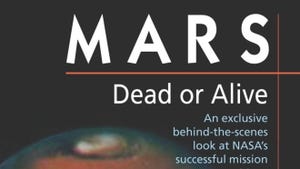
Episode 2
Secret of the Crocodile Caves
Tue, Jan 20, 2004 60 mins
Tracking the wildlife in Ankarana, a "true lost world" in northern Madagascar, where jagged, 1000-foot ridges wall off lush forests. The rulers of Ankarana: Nile crocodiles, sun lovers that nonetheless live in caves that honeycomb the ridges. The reason why they do intrigues French scientist Olivier Behra. Meanwhile, American biologist Luke Dollar is interested in the fossa, a "superpredator" he likens to "a mongoose on steroids." A fossa is seen here stalking Madagascar's signature animal, the lemur, primative primates that some people believe have human souls.
Episode 3
Dogs and More Dogs
Tue, Feb 3, 2004 60 mins
"Dogs and More Dogs" explores how and why dogs evolved from wolves in less than 10,000 years, and why (scientifically speaking) they hooked up with people. Their domestication, it seems, was wolf-inspired: they learned that if they stuck close to humans, they'd be fed. And their diversity (400 breeds) stems from the various things that people had some---but not other---dogs do. And why do people like dogs so much? "They're very good at showing they like us," says James Serpel of the University of Pennsylvania's School of Veterinary Medicine. John Lithgow narrates.
Episode 4
Descent Into the Ice
Tue, Feb 10, 2004 60 mins
"Glacionauts" dive into glacial water wells on Mont Blanc in the Alps to search for hidden "lakes" that could give way and inundate villages below. It hasn't happened since 1892, but that catastrophe ravaged the French village of Saint Gervais, killing 200 people. The formations that glaciologist Luc Moreau and photographer Carsten Peter explore are "ever changing," Moreau says. And, thanks to climate changes, they're not getting any colder.
Episode 5
Crash of Flight 111
Tue, Feb 17, 2004 60 mins
"Disaster detectives" from Canada's Transportation Safety Board are followed as they piece together the reason why a Swissair flight from JFK to Geneva crashed off Nova Scotia in 1998, killing all 229 aboard. It turned out to be a fire started by faulty wiring, and what followed, seen here as the flight's final six minutes are re-created, is not easy to watch. And the program's assertion that few of the board's recommendations have been implemented is not easy to take.
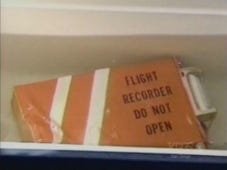
Episode 6
Life and Death in the War Zone
Tue, Mar 2, 2004 60 mins
Following the personnel of two U.S. Combat Support Hospitals (their informal name: CaSHes) as they treat the wounded in Iraq. The equipment is certainly more sophisticated than at the Korean War mobile hospitals made famous by the TV series "M*A*S*H," but the life and death challenges faced by the doctors and nurses of the 10th and 21st CaSH units are the same as they treat U.S. military personnel, as well as enemy combatants and Iraqi civilians.
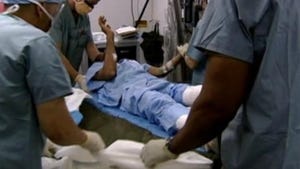
Episode 7
Hunt for the Supertwister
Tue, Mar 30, 2004 60 mins
"The Hunt for the Supertwister" follows University of Oklahoma scientists as they crisscross the Great Plains looking for reasons why tornadoes form so they can predict them more accurately. They're seen getting up close and personal with twisters, which can come with little warning. It was "as if someone had turned on a switch," says one of these scientific "stormchasers" of a "super cell" that formed in May 2003. The hour also recalls a twister that devastated Moore, Okla., in 1999 and one touched down in Maryland in 2002. And it looks at a computer model that displays what the narrator calls "an amazingly intricate dance of wind and moisture interacting with the environment."
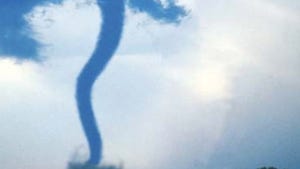
Episode 8
The People Paradox
Tue, Apr 20, 2004 60 mins
Examining the "demographic divide" between developed and underdeveloped nations. Visits to India, Japan and Kenya explore problems caused by too many people in the underdeveloped world and too few in many industrialized nations, where too many people will soon be old. Oliver Platt narrates.
Episode 9
China Revs Up
Tue, Apr 20, 2004 60 mins
Reviewing upsides and downsides of China's economic "binge" of the last quarter century. "The world has never seen a country get so rich so fast," says narrator Oliver Platt. One telling statistic: 200,000 cars in 1995; 30 million in 2004. One telling harbinger: Scientists are finding traces of pollution from China in the air in Washington State.
Episode 10
Battle Plan Under Fire
Tue, May 4, 2004 60 mins
A report (produced with the New York Times) on how military technology was tested during the U.S. invasion of Iraq and the occupation that followed. Included: the National Geospatial-Intelligence Agency's survey of Iraq; the Stryker Brigade, a lightly armored troop carrier with sophisticated communication and GPS equipment; the Pentagon's Combating Terrorism Technology Task Force; and Millennium Challenge 2002, a war-game simulation of the invasion.
Episode 11
Origins: Earth Is Born
Tue, Sep 28, 2004 60 mins
Astrophysicist Neil deGrasse Tyson measures Earth's 4.5-billion-year history in terms of one 24-hour day. This episode covers the first hour, when, he says, the planet was "beaten, bombarded, mangled and melted" for several hundred million years. But this was, he adds, "the best thing to happen to planet Earth" because it set the stage for the appearance of life.
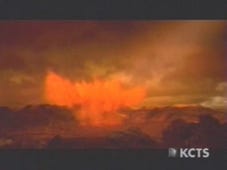
Episode 12
Origins: How Life Began
Tue, Sep 28, 2004 60 mins
The origins of life are examined as hydrogen, oxygen, carbon and nitrogen "combined in just the right way," says astrophysicist Neil deGrasse Tyson. And they probably arrived here from outer space during the "heavy bombardment" of Earth's first 600 million years.
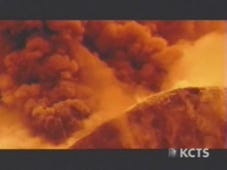
Episode 13
Origins: Where Are the Aliens?
Wed, Sep 29, 2004 60 mins
Astrophysicist Neil deGrasse Tyson explores whether life is unique to Earth. "The elements essential to life as we know it are widespread throughout the universe," Tyson says, but no extraterrestrial life has yet been found. Why? One reason is that light emitted by stars blinds astronomers to the planets revolving around them.
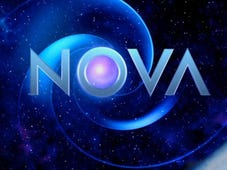
Episode 14
Origins: Back to the Beginning
Wed, Sep 29, 2004 60 mins
Astrophysicist Neil deGrasse Tyson goes back to the big bang to ponder "the grand mysteries of the universe," following scientists as they seek to answer questions that arose with the discovery of the big bang in the 1960s. They have only just begun, but, Tyson marvels, they already have found "a chain of connections that links the birth of the universe to us."
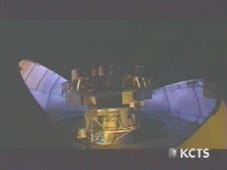
Episode 15
The Most Dangerous Woman in America
Tue, Oct 12, 2004 60 mins
"The Most Dangerous Woman in America" recalls Mary Mallon (a.k.a. "Typhoid Mary"), a cook in New York City who infected 47 people with typhoid fever in the early 20th century. This profile of Mallon, part medical mystery, part social history, combines expert commentary with dramatizations, as it traces the epidemiological swath she cut, and explores a class divide that was united only by illness. Ironically, Mallon was never sick with the disease herself. Mallon: Marian Tomas Griffin.
Episode 16
America's Stone Age Explorers
Tue, Nov 9, 2004 60 mins
Did the first Americans come from...France? "America's Stone Age Explorers" examines several theories about how and when the New World was first populated. Many scientists dispute the long-standing theory that the first to arrive crossed a "land bridge" from Asia some 13,500 years ago, because artifacts much older have been found in Pennsylvania, Texas, Virginia and Chile. Some believe the Solutreans crossed the Atlantic from France and Spain around 17,000 to 18,000 years ago.
Episode 17
Great Escape
Tue, Nov 16, 2004 60 mins
"Great Escape" follows archaeologists---and original escapees---as they retrace the daring World War II POW escape dramatized in the 1963 Steve McQueen movie. The team searches for the 300-ft. tunnel (one of three) that the Germans never found at Stalag Luft III in Sagan, Poland, which housed captured Allied airmen. Supplementing the recollections are re-creations of the March 1944 escape and the 11 months of tunneling that preceded it. "If you're claustrophobic," says American Davy Jones, "you're in deep trouble."
Episode 18
Ancient Refuge in the Holy Land
Tue, Nov 23, 2004 60 mins
"Ancient Refuge in the Holy Land" follows an archaeological dig in the "cave of letters" in Israel's Judean Desert, where refugees from the Bar Kokhba revolt held out against Rome in A.D. 132. American historian Richard Freund, who's also a rabbi, offers evidence that the cave might have been a refuge for Jews fleeing the destruction of the temple at Jerusalem 62 years earlier. This theory is controversial, but no one disputes that the Emperor Hadrian's response to the Bar Kokhba revolt was unspeakably brutal. Almost 600,000 Jews died. "The scope was so great," Freund says, "that it was only eclipsed in modern times by the Holocaust."